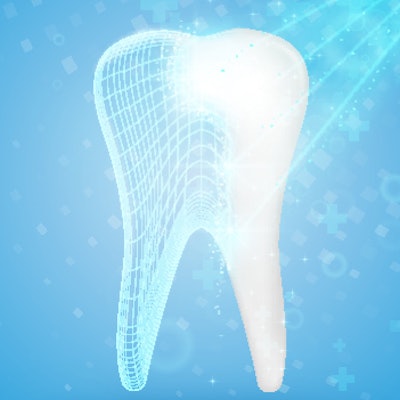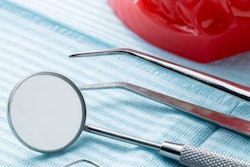
Dentists have been drilling and filling for decades, but what if one molecule could end this practice for good? Scientists have created a peptide with antimicrobial and remineralizing properties to help prevent and maybe even reverse tooth decay.
The molecule combines salivary peptide histatin 5, which already showed promise as an antimicrobial agent, and the chemical compound phosphoserine, which has demonstrated tooth remineralization properties. The research, published in ACS Applied Materials & Interfaces (January 2020, Vol. 12:2, pp. 3021-3031), demonstrated that combining the two agents may create a more powerful peptide than either one on its own.
"Compared to its original endogenous peptide, the synthesized bioactive peptide showed statistically significant higher binding affinity to the tooth surface, stronger suppression of demineralization, and a certain promotion of tooth remineralization," wrote the authors, led by Li Zhou, from the department of pediatric dentistry at the University of Hong Kong. "The abilities of the peptide to inhibit Streptococcus mutans biofilm formation and S. mutans adhesion on the tooth surface were not affected after synthesis."
To create the molecule, the researchers first synthesized phosphoserine and histatin 5 into a single peptide. They tested the new Sp-H5 molecule's anticaries, demineralization, and remineralization properties with more than 100 tooth slices.
The molecule proved highly effective at combating caries-forming bacteria S. mutans. Within 24 hours, the molecule destroyed the majority of S. mutans biofilms.
The combination of histatin 5 and phosphoserine also appeared to reduce demineralization and promote remineralization.
When exposed to demineralization solutions, enamel slices with the molecule experienced significantly lower losses of calcium and phosphorous than the control group. Similarly, enamel with the molecule developed significantly more calcium and phosphorus when exposed to remineralization solutions.
Furthermore, enamel coated with the molecule developed a 2.5-µm remineralized layer that appeared similar to the natural enamel underneath, compared with a 2-µm layer for the control group. The speed of remineralization also was faster than for the control group.
While the molecule appeared promising for several reasons, its demineralization and remineralization properties were not significantly better than enamel coated with histatin 5 alone. The molecule is also a long way from clinical applications, and it's highly unlikely that solutions with this molecule or something similar could entirely replace the need for drilling and filling.
Nevertheless, the researchers believe that one day the molecule could be a promising addition to daily caries prevention strategies.
"In clinical practice, Sp-H5 could be applied on the enamel surface, in the form of varnish or gel, prior to food consumption or after tooth brushing," the authors wrote. "This bioactive molecule could also be utilized in other biomaterial fields such as bone grafts and dental implants to achieve antibiofouling and in situ self-healing remineralization on the target surface."



















